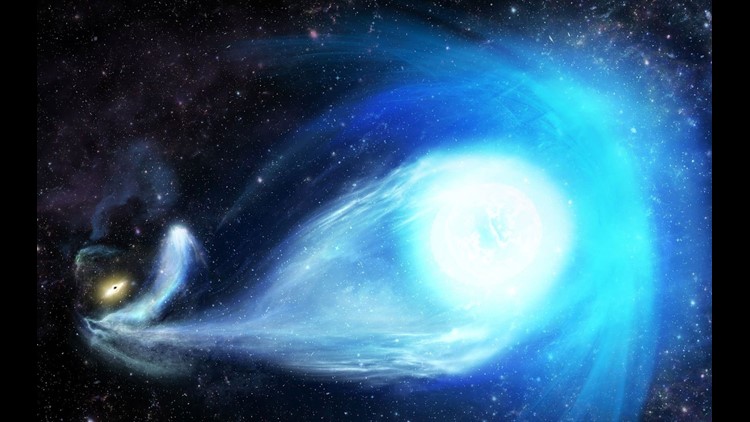Astronomers have spotted a star speeding through our galaxy at more than 3,728,227 mph. And in 100 million years, it will leave the Milky Way for good.
But where did it come from and why is it in such a hurry to leave? Astronomers using the 3.9-meter Anglo-Australian Telescope at the Australian National University’s Siding Spring Observatory discovered the star and conducted follow-up measurements to track its path.
The findings about the star published Tuesday in the Monthly Notices of the Royal Astronomical Society.
“We traced this star’s journey back to the center of our galaxy, which is pretty exciting,” said Gary Da Costa, study author and professor at the ANU Research School of Astronomy and Astrophysics. This star is traveling at record-breaking speed — 10 times faster than most stars in the Milky Way, including our Sun.
The astronomers were looking for the remains of small galaxies that orbit the Milky Way. The telescope they were using can measure about 400 targets at a time. Instead, they found a star on the outskirts of the galaxy that had been kicked there by the supermassive black hole at the center. The black hole is known as Sagittarius A* or Sgr A*. The black hole is 4.2 million times more massive than our sun.
If the black hole interacted with a binary star system that got to close, the results can be tragic for the star system.
“If such a binary system approaches a black hole too closely, the black hole can capture one of the stars into a close orbit and kick out the other at very high speed,” said Thomas Nordlander, study co-author and professor at ANU.
The star is 29,000 light-years away from Earth and it was kicked away by the black hole about five million years ago.
“In astronomical terms, the star will be leaving our galaxy fairly soon and it will likely travel through the emptiness of intergalactic space for an eternity,” said Da Costa. “It’s great to be able to confirm a 30-year-old prediction that stars can be flung out of a galaxy by the supermassive black hole at its center.”
The astronomers plan to keep tracking the star and gain a more precise measurement of its velocity and position, thanks to the European Space Agency’s Gaia satellite, according to Dougal Mackey, study author and ARC Future Fellow at the Australian National University’s Research School of Astronomy and Astrophysics.
Mackey said there are a number of known “hyper velocity stars” like this one, but special features set the newly observed star apart.
“The two really special features of this star, though, are that its speed is much higher than other similar stars that were previously discovered (which all had velocity below 1000 km/s) and it’s the only one where we can be almost certain that it has come directly from the center of the Milky Way,” he said. “Together those facts provide evidence for something called the ‘Hills mechanism’ which is a theorised way for the supermassive black hole in the center of the Milky Way to eject stars with very high velocity.”
The astronomers don’t know how common these so-called “evictions” are, but they have a theory that one might occur every few hundred thousand years, he said.
Determining the orbits of these kinds of stars can also help astronomers to understand and measure other parts of the galaxy. And understanding the composition and properties of a star born in the middle of the galaxy would shed light on stars that are otherwise hard for astronomers to observe.
“For this particular star, we hope to obtain better spectroscopic measurements that might let us determine its composition,” Mackey said. “That’s interesting because we think it was born right in the Galactic Center, which is a region that’s very difficult for us to observe in detail. So with this star we might learn about the conditions of star formation in that region and the composition of the gas from which stars are being formed.”



